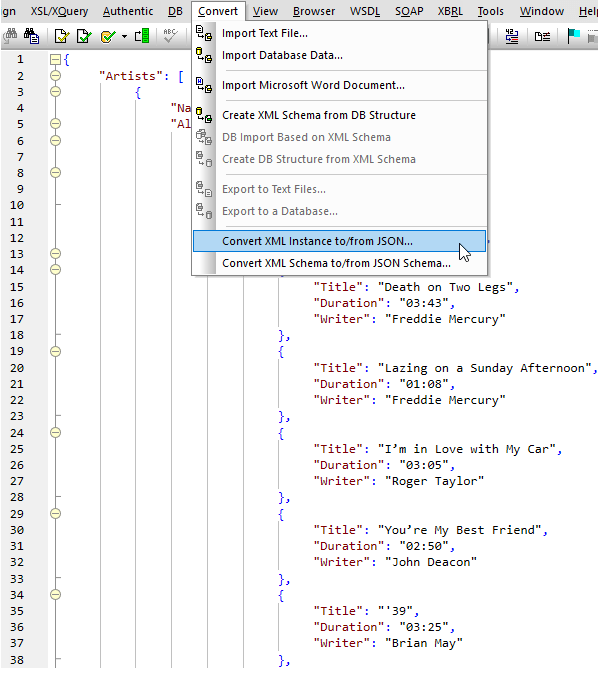
Open your project/solution in Visual Studio 2019.Ĭopy the JSON object for which you want to convert as a class. Let consider the below JSON object and i had copied it. In this article, we are going to explore how to convert a JSON/XML object into the classes using Visual Studio. Visual Studio can do this work and generate classes from a JSON/XML using just copy-paste. Normally, if we want to convert a JSON/XML object into class, then we will check tools online for conversion. An example of calling this function is also given, which shows that it can successfully convert an XML string into its corresponding JSON representation.Creating classes based on JSON/XML responses, from APIs are the most usual work for all developers. To convert a JSON file to an XML string, we will first open the JSON file in read mode using the open()function. It does this by using the ElementTree library to parse the XML string into an ElementTree object, and then recursively iterating over the elements to build up a JSON object. The code provided demonstrates how to use the built-in `json` and `xml` modules in Python to convert XML strings into JSON strings. You can use the built-in `json` and `xml` modules in Python to convert XML to JSON. We’ll walk through an example of using the ElementTree library, which is part of the xml module, to parse our XML string and then recursively iterate over its elements in order build up a corresponding JSON object. This blog post will demonstrate how to use the built-in `json` and `xml` modules in Python to convert an XML string into a JSON object. Next, we will convert the python dictionary to a JSON string.

The parse() method takes an XML string as its input argument and returns the corresponding dictionary.


For this, we will use the parse() method defined in the xmltodict module. Python provides powerful tools for converting XML to JSON. To convert an XML string to a JSON string, we will first convert the XML string to a Python dictionary.


 0 kommentar(er)
0 kommentar(er)
